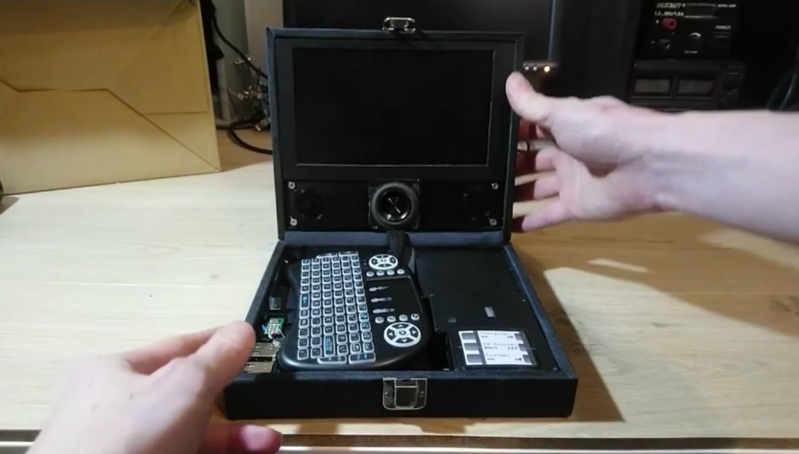Building a Raspberry Pi laptop is not that uncommon. In fact, just a few clicks from any of the major electronics suppliers will have the parts needed for such a project speeding on their way to your house in no time at all. But [joekutz] holds the uncontroversial belief that the value in these parts has somewhat diminishing returns, so he struck out to build his own Pi laptop with a €4 DVD player screen and a whole lot of circuit wizardry to make his parts bin laptop work.
The major hurdle that he needed to overcome was how to power both the display and the Pi with the two small battery banks he had on hand. Getting 5V for the Pi was easy enough, but the display requires 8V so he added one lithium ion battery in series (with its own fuse) in order to reach the required voltage. This does make charging slightly difficult but he also has a unique four-pole break-before-make switch on hand which doesn’t exactly simplify things, but it does make the project function without the risk of short-circuiting any of the batteries he used.
The project also makes use of an interesting custom circuit which provides low voltage protection for that one lonely lithium battery as well. All in all it’s a master course in using some quality circuit-building skills and electrical theory to make do with on-hand parts (and some 3D printing) rather than simply buying one’s way out of a problem. And the end result is something that’s great for anything from watching movies to playing some retro games.
















i can’t believe people put pis on batteries, given the thing is a heater even when it’s unloaded. there’s enough black box i don’t care to invest the effort to figure out why but it seems to me like the closed source firmware there probably keeps a bunch of stuff powered on that really should go into idle mode.
Well, before the Raspberry Pi if you wanted to do this you would have to either hack a router or buy a PC-104 board. If you went the PC-104 route you likely only ended up with a 486 class processor unless you had piles of cash to burn. Then you might have managed a 586.
Now there are plenty of Raspberry Pi competition wannabes but most are just as proprietary or worse and they don’t have the same level of community support. I’m frustrated that I can’t get anything newer than Jessie on my Banana Pi but it’s still the only thing in my target price range with a SATA port.
Agreed, actually. Indeed, the Pi eats about 3W doing nothing, while running e.g. scummVM does not seem to add much more. But I have never said that this project makes a lot of sense. Is is (like most of my projects) mainly a proof of concept. But two hours battery runtime make it at least couch-usable :)
Huh? I thought that Pis – like the Pi 2, require less than 500mA..
https://www.raspberrypi.org/documentation/hardware/raspberrypi/power/README.md
I measured one of my Pi 4s running chromium, no video, just a plain text page and it drew 750mA. It was easy to make it increase from there, but I didn’t take any notes, and it’s been months ago, so I don’t remember how high I got it.
So use a different distro? Or compile your own basic one?
Now, do I still have those portable DVD players my daughter destroyed?
Or, are they squirreled around here somewhere?